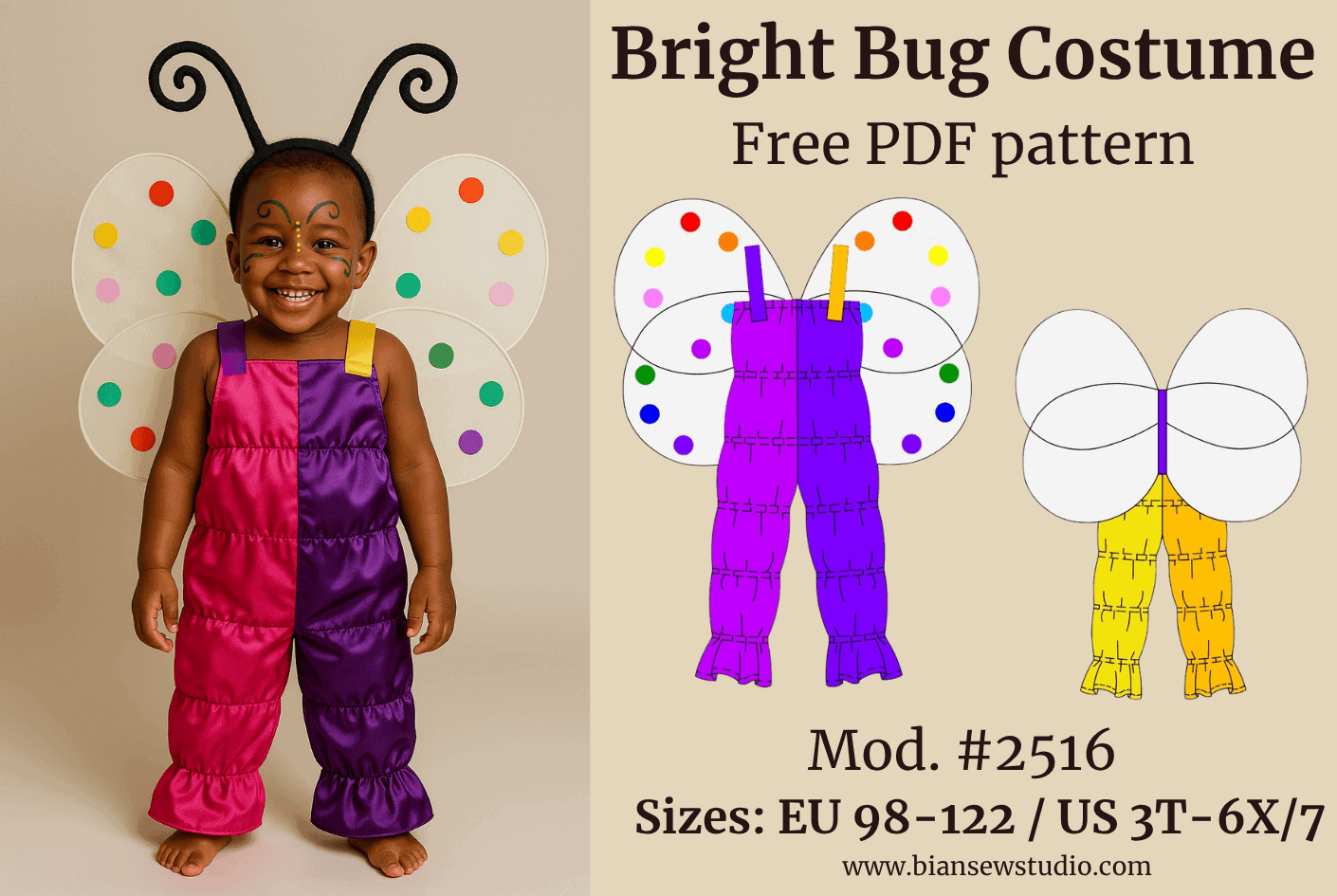
The Spring & Fall Coat – timeless elegance for every occasion
Clean lines, classic look Looking for the perfect coat to wear between seasons? The Spring

Sewing for little ones is always a joy, and the Tiny Steps Overall is the perfect project to brighten up your sewing table. This free baby overall pattern is designed for sizes EU 62–80 / US 3M–12M, making it an ideal choice for fast-growing babies in their first year.
The pattern is beginner-friendly (recommended skill level: learning), so even if you’re just starting your sewing journey, you’ll find it approachable and rewarding.
Your free download comes with everything you need to start:
Full sewing pattern pieces
Fabric requirement guide
Size chart (EU & US sizes)
Cutting layout
List of all pattern pieces
For those who want step-by-step guidance, a premium version with detailed sewing instructions is also available in my shop. This extra support will walk you through each stage of sewing, so you can stitch with confidence.
This baby overall is designed to be comfortable, practical, and timeless. It features roomy pockets and an easy fit, giving babies the freedom to move, play, and explore.
Here are some ideas on when and how to dress your little one in the Tiny Steps Overall:
Everyday wear: Perfect for crawling, playing in the garden, or a trip to the park. Pair it with a short-sleeved bodysuit in summer or a cozy long-sleeved tee in cooler weather.
Family gatherings: The simple yet stylish design makes it a sweet outfit for visiting grandparents or enjoying a Sunday brunch together.
Photo sessions: Handmade outfits add a unique touch to milestone photos. The overall looks adorable in solid colors, pastels, or playful prints.
Gift idea: Sew it as a thoughtful, handmade present for a baby shower, or surprise a new mom with something made by you.
Use soft cotton jersey, French terry, or other breathable fabrics for everyday comfort.
Choose bright colors or prints to make it fun and cheerful, or neutral shades for a minimalist look.
Add personalized touches like decorative stitching, cute appliqués, or different pocket shapes.
The Tiny Steps Overall is not just a pattern—it’s a chance to create something filled with love, whether you’re sewing for your own child, a grandchild, niece, nephew, or a special little one in your life.
👉 Downloas now and start your next sewing project today!
If you’d like extra guidance while sewing, the premium version is available, which includes a detailed, step-by-step written sewing tutorial. This is ideal for beginners who want not only the pattern but also clear, detailed instructions.
The premium tutorial can be purchased separately in my shop.
Who is this pattern for?
Beginners – with the premium tutorial, you can confidently start sewing.
Experienced sewists – the free version provides all the information you need.
Moms, grandmas, and family members – who want to create a comfortable and unique handmade outfit for their little ones.
How can you download it?

Don’t miss out – sew your own Tiny Steps Overall and give your little adventurer the perfect playtime outfit!

Here are some essential tips for a successful sewing project:
By following these guidelines, you’ll achieve a professional-looking finish and a well-fitting garment or accessory. Happy sewing! 🧵✂️

Clean lines, classic look Looking for the perfect coat to wear between seasons? The Spring

Colorful, cheerful, and easy to sew A bright costume for little creators Looking for a
![Photo of child wearing the Fly Costume to showcase the design. Next to it, the sewing pattern drawing of the garment is displayed. The image includes the text: Fly costume, Free PDF pattern, Mod. #2515, Sizes: [sizes EU: 98, 104, 110, 116, 122 and US 3T, 4T, 5, 6, 7].](https://biansewstudio.com/wp-content/uploads/2025/10/Blog-1.png)
Fun and simple DIY costume Looking for a fun and unique costume for your child?

Cute, cozy, and handmade charm Introduction Looking for a fun and cozy costume to sew